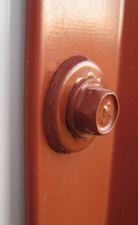Screw Through Ridges or Valleys?
Today’s article is courtesy of the Journal of Light Construction online:
Q: The new corrugated metal roofing on our client’s garage leaks. The installer had driven the fasteners through the valleys and into the 2-by rafters. We’ve since been told that corrugated roofing should always be fastened through the ridges of the corrugation. Which method is correct?
A: Rob Haddock, a metal-roof consultant and director of the Metal Roof Advisory Group, responds: The culture of fastening through the ridge (crest) or through the valley of the metal-roof profile seems to vary in the continental U.S. from one place to the next, from one contractor to the next, and even from one manufacturer to the next. Many years ago (before the advent of weather-sealing washers on fasteners), corrugated roofing was always fastened through the ridges using “lead head” nails. These were galvanized roofing nails with a lead washer under the head. As a nail was driven and its head came in contact with the roofing, the soft lead was supposed to conform to the surface of the roof to provide a seal. But these fasteners were notorious for leaking, which is why they were always driven through the high points of the roofing profile.
 Today the fasteners of choice for corrugated roofing are gasketed hex-head screws with a metal and rubber washer below the head. As the screws are driven, the washer presses against the metal roofing to form a waterproof seal. If the screws are driven correctly, fastening through either the valleys or the ridges of the roofing is considered acceptable in this country. Valid arguments can be made for both preferences. If the fasteners on your roof were all properly driven, it is unlikely that they are the source of your leaks, regardless of whether they were driven through valleys or ridges.
Today the fasteners of choice for corrugated roofing are gasketed hex-head screws with a metal and rubber washer below the head. As the screws are driven, the washer presses against the metal roofing to form a waterproof seal. If the screws are driven correctly, fastening through either the valleys or the ridges of the roofing is considered acceptable in this country. Valid arguments can be made for both preferences. If the fasteners on your roof were all properly driven, it is unlikely that they are the source of your leaks, regardless of whether they were driven through valleys or ridges.
No matter whether your installer prefers to screw ridges or valleys, there are several factors to consider when fastening metal roofing to a building. Be sure to choose the right fastener—the right length as well as the right material—for your particular application. Roofing manufacturers often recommend certain fasteners and fastening schedules for their products according to the structural material of the roof. Each fastener must be driven straight into the metal roofing perpendicular to the plane of the roof to ensure that the washer seals evenly around the fastener hole. Also, fasteners should be driven using a properly adjusted torque-sensitive tool to avoid over-driving. Applying too much torque when fastening through the ridges could crush or distort the profile of the roofing, and applying too much torque in the valleys could distort the washer to the point where it no would longer create an effective seal.






